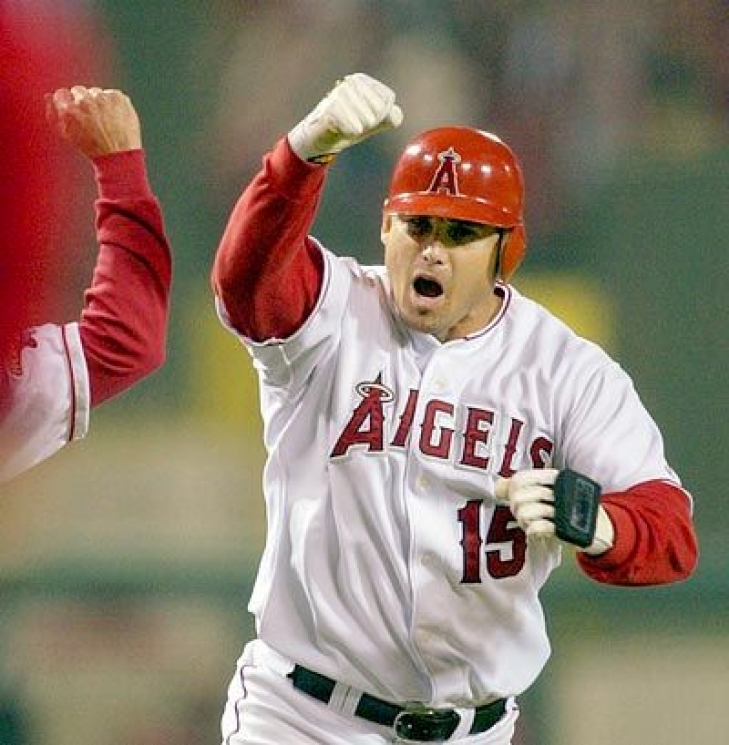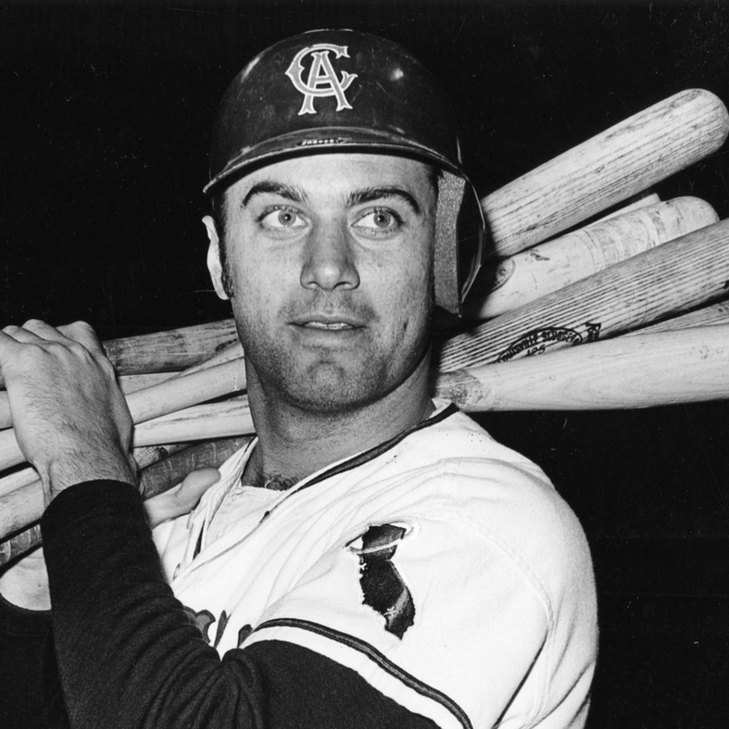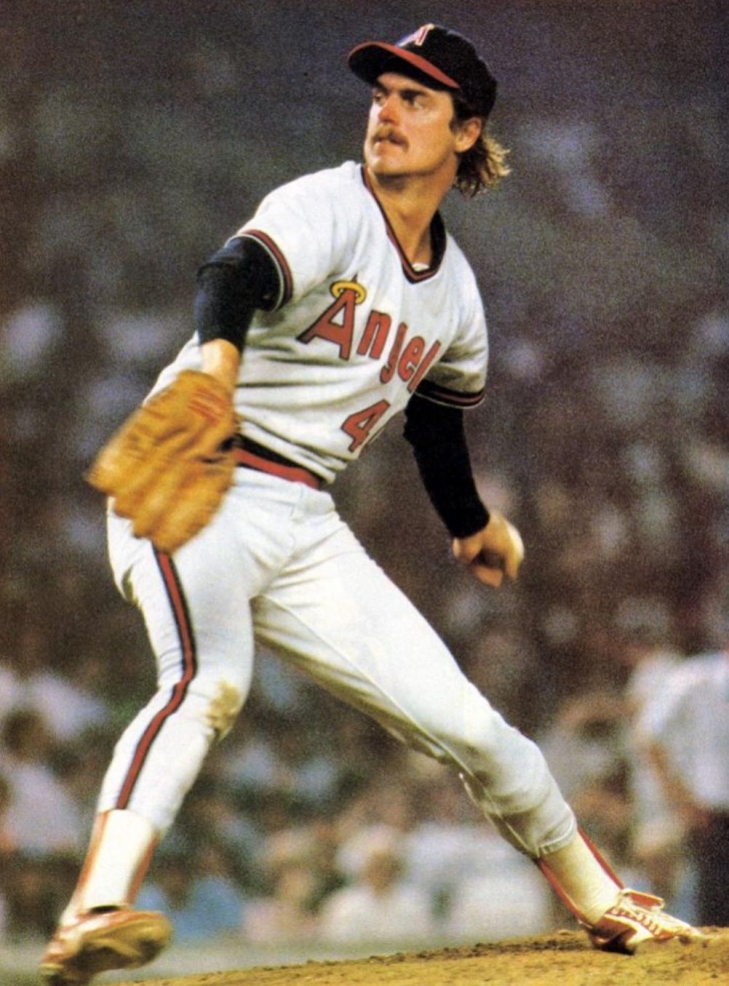
Committee Chairman
7. Tim Salmon
Tim Salmon played his entire Major League career wearing the Halo, and while it may not have been a spectacular or flashy career, it was consistent.
Salmon first played for the Angels in 1992 for 23 Games, and the following season he smacked 31 Home Runs with a .283 Batting Average to win the American League Rookie of the Year. While this might have been a springboard to greatness, it was more a reflection of what Salmon would provide over the next decade as their Rightfielder.
A Silver Slugger in 1995, Salmon had five 30 Home Run seasons, with another three cracking the 20 HR plateau. He batted at least .280 eight times, had two 100 RBI years, and his Slugging Percentage cracked .500 on eight occasions.
Late in his career, Salmon helped the Angels win the 2002 World Series. Playing until 2006, Salmon left the game with solid numbers of 299 Home Runs, 1,016 RBIs, and a Slash Line of .282/.385/.498.
The Angels inducted Salmon into their franchise Hall of Fame in 2015.
4. Jim Fregosi
The California Angels were no powerhouse in the 1960s, and bluntly, they were pretty bad. However, if there were a team MVP for the decade, it would have to be Shortstop, Jim Fregosi.
Before he reached the Majors with the Angels, he was in the Red Sox system. The Angels took him in the expansion draft, and he was on the main roster in 1961 and a regular at short by 1963. Named to six All-Stars, including five consecutive (1966-70), Fregosi was an excellent hitting infielder for his day, showing occasional power (four years with double-digits in Hone Runs). He had at least 140 Hits annually from 1963 to 1970. In all of those years, he was considered valuable enough to where he received MVP votes, peaking in 1967 with a seventh-place tally on the strength of a Gold Glove, 171 Hits, and a .290 Batting Average.
The New York Mets traded for Fregosi after the 1971 season, but he wasn’t the same player. The Mets loss was California’s gain, as Nolan Ryan was one of the players they landed. With the Angels, Fregosi had 1,408 Hits, 115 Home Runs with a .268 Batting Average.
Fregosi would later manage the Angels from 1978 to 1981, and in 1989, he became the second player inducted into the Angels Hall of Fame. Nearly a decade later, Fregosi’s number 11 was retired by the team.
6. Jered Weaver
Winning both the Golden Spikes Award and Dick Howser Trophy at Long Beach State in 2004, Jered Weaver was the 12th Overall Pick in that year's Amateur Draft, debuting two years for the Los Angeles Angels of Anaheim, the team that took him. High expectations were on Weaver, and he did well, warning his spot in the rotation and finishing fifth in American League Rookie of the Year voting.
Weaver’s best seasons were between 2010 and 2012, where he went to three straight All-Star Games. Leading the AL in Strikeouts (233) in 2010, Weaver had fewer Ks in 2011, but his ERA dropped to 2.41, and his WHIP was stellar at 1.010. Weaver, who was fifth in Cy Young voting in 2010, was second in 2011 and would be third in 2012 where he was first in the league in Wins (20), WHIP (1.018), and H/9 (7.0).
Weaver was still a good Pitcher, leading the AL in Wins in 2014 (18), but he slumped in 2015, with a bloated ERA of 4.64, which got worse in 2016 (5.05). He joined San Diego as a Free Agent in 2017 but only pitched nine Games before retiring.
The overall Angels record of Weaver is a good one; 150-93 with 1,596 Strikeouts.
8. Frank Tanana
Frank Tanana would be on the first ballot if there were a Hall of Fame for underrated Pitchers.
Tanana played the first eight years of his 21 with the California Angels, and if you were paying attention, you were seeing one of the best hurlers in the American League. The southpaw was easy to overlook, as the Angels were only in the playoffs once when Tanana was there (1979), and he was on the same staff as Nolan Ryan, so ace status was not bestowed upon him.
Debuting in 1973, Tanana was in the rotation the following year, going 14-19, but despite the losing record, he had 180 Strikeouts with a decent 3.12 ERA. Tanana then had three great years, where he was in the top-nine in Cy Young voting, and kept his ERA well under three, including winning the ERA title in 1977 (2.54) and also leading the AL in bWAR for Pitchers (8.3). In the two years before, Tanana also had a bWAR over seven, was first in SO/BB, and had a Strikeouts Title (280 in 1975). With what we know of today’s advanced metrics, it is possible that Tanana should have captured the Cy Young, but he was ninth, distantly behind Sparky Lyle of New York.
Tanana's last few years were plagued with tendinitis, and his pitching suffered, but he was still a competent starter and helped California reach their first playoffs in 1978. He was dealt to the Red Sox before the 1981 season, leaving the Angels with a 102-78 record with 1,233 Strikeouts.





